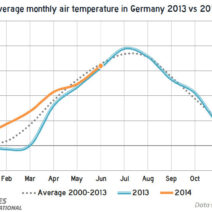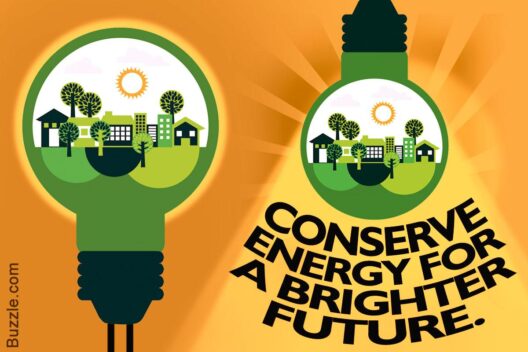Global warming represents one of the most pressing challenges of our time, orchestrating a dangerous symphony of environmental degradation, extreme weather events, and irrevocable biodiversity loss. Addressing this intricate phenomenon requires a multifaceted approach, one that involves concerted efforts across various sectors. This article seeks to illuminate effective solutions for slowing climate change, emphasizing the imperative actions individuals, businesses, and governments can undertake.
In this discourse, we will delve into renewable energy sources, sustainable agricultural practices, reforestation efforts, and conservation of biodiversity. Each of these elements plays a critical role in mitigating the effects of global warming.
Exploring Renewable Energy: A Pivot Toward Sustainability
The transition from fossil fuels to renewable energy sources is paramount in combating global warming. Solar, wind, hydroelectric, and geothermal energy represent formidable alternatives that can significantly decrease greenhouse gas emissions. Solar power, harnessed through photovoltaic cells, has witnessed dramatic reductions in cost and increases in efficiency over the past decade, making it an accessible option for both individual households and large-scale energy providers.
Wind energy, characterized by the use of large turbines, generates electricity without emitting carbon dioxide during operation. Countries like Denmark and Germany have led the way in wind power implementation, achieving benchmarks that other nations can emulate. Hydroelectric power, utilizing water flow to generate energy, remains a significant contributor, particularly in regions blessed with abundant water resources. However, care must be taken to ensure that such projects do not disrupt local ecosystems.
Investments in geothermal energy also provide a sustainable and reliable energy source. Tapping into the Earth’s internal heat presents a lesser-known yet impactful avenue for energy generation, particularly in tectonically active regions.
For a successful transition to renewable energy, government policies should incentivize innovation and infrastructure development. Subsidies for clean energy projects and the phasing out of fossil fuel subsidies can catalyze market shifts towards renewables. Individuals can also play a part by opting for green energy providers or investing in solar panels for personal use.
Transforming Agriculture: Cultivating Sustainability
A pivotal sector often overlooked in climate discussions is agriculture. Modern farming practices contribute significantly to greenhouse gas emissions, primarily through methane emissions from livestock and nitrous oxide from synthetic fertilizers. Adopting sustainable agricultural practices can substantially mitigate these emissions.
Regenerative agriculture, which focuses on restoring soil health, incorporates methods such as cover cropping, crop rotation, and agroforestry. These practices enhance soil fertility and sequester carbon, leading to healthier ecosystems and increased resilience against climate impacts. Moreover, integrating more plant-based foods into diets can greatly reduce the carbon footprint associated with meat and dairy production. As consumers become more conscientious about their food choices, the demand for sustainable products increases, driving change within the agricultural sector.
Furthermore, vertical farming and hydroponics represent innovative solutions that can minimize land use while maximizing yield. By utilizing controlled environments, these methods reduce the reliance on pesticides and increase resource efficiency, thus alleviating pressure on traditional farming methods.
Forestation and Reforestation: Breathing Life Back into the Planet
The significance of forests in absorbing carbon dioxide cannot be overstated. Reforestation and afforestation initiatives are vital in offsetting emissions and enhancing biodiversity. Restoring degraded lands and expanding forested areas can help recapture carbon and provide essential habitats for countless species. Initiatives like the Bonn Challenge aim to restore 150 million hectares of deforested land by 2020, encouraging countries to commit to enhanced forest conservation efforts.
Community involvement is crucial in successful reforestation efforts. Engaging locals not only fosters ownership but also ensures that indigenous knowledge informs which species to plant and how to manage the land sustainably. Planting native species is particularly important, as they are better adapted to local ecosystems and promote biodiversity. Additionally, urban reforestation can mitigate the urban heat island effect, improving air quality and enhancing the quality of life in cities.
Conserving Biodiversity: Protecting Our Ecological Foundations
The preservation of biodiversity is intrinsically linked to climate resilience. Healthy ecosystems provide essential services, such as pollination, water purification, and climate regulation. Protecting endangered species and their habitats is not merely an ethical responsibility but a necessity for sustaining human life.
Parks, sanctuaries, and protected areas create biodiversity havens, allowing species to thrive and ecosystems to recover. Implementing policies that reduce habitat destruction and promote wildlife conservation can significantly enhance biodiversity. Furthermore, practices such as the creation of wildlife corridors facilitate the movement of species and promote genetic diversity.
Engaging in conservation efforts can also extend to businesses. Companies adopting sustainable sourcing, reducing their carbon footprints, and investing in corporate social responsibility initiatives can markedly impact biodiversity preservation. Consumers should support companies that prioritize sustainable practices, thereby promoting a market that values ecological integrity.
Conclusion: An Urgent Call to Action
Preventing global warming necessitates a paradigm shift in how we approach energy, agriculture, reforestation, and conservation. While the challenges are significant, the array of solutions at our disposal is equally vast. Collective action from individuals, corporations, and governments is not merely beneficial but essential. Through proactive measures, we can curtail the trajectory of climate change, securing a viable future for generations to come.
By choosing sustainable practices, advocating for policy changes, and raising awareness, we each can play a part in this global movement. The time to act is unequivocally now, for the fate of our planet hinges on the decisions we make today.








